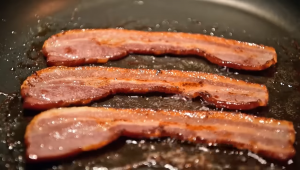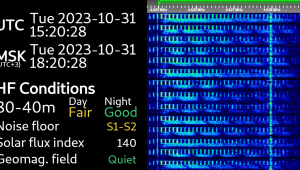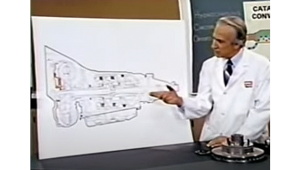LP Thunderdome: 2 Channels Enter, 1 Groove Leaves

Here's what's interesting. Old guys know how vinyl works; they were young when vinyl was still dominant and they learned the ins and outs of vinyl. Enthusiasts who are new to vinyl have less access to that information; simply put, they might not know much about analog technology. Let's start changing that. Vinyl is even cooler if you know how it works. For example, how do they get left and right channels into one groove? And old guys—are you sure you really know?
In today's mainly digital world, multi-channel audio playback is relatively simple. A CD, for example, places data into a frame format; each frame holds twelve 16-bit audio samples; the player's processor simply reads the demodulated bitstream and directs left and right words to the appropriate output path. Easy peasy.
But getting stereo into a record groove isn't so simple. We take it for granted, and the solution is elegant, but it took years and years of experimentation before a solution was achieved. Even then, the stereo groove that was standardized, and is used today, has serious compromises that inherently limit the fidelity that can be achieved.
To help understand the groove mechanics at work, take a look at some very tidy animations available at vinylrecorder.com. First, you'll see two basic ways to encode a monaural analog signal in a groove. In vertical recording (Edison's baby, born in 1877), the stylus rides up and down according to the analog signal; the depth (and width) of the groove changes. With horizontal recording (Berliner's baby, born in 1887), the stylus moves laterally; you'll see that the width of the groove is constant, but it wiggles side to side.
Both vertical and horizontal recording can be used to record a monaural signal. But there are limitations. For example, vertical recording suffers from nonlinear tracing distortion that occurs when the shape of the playback stylus differs from the recording stylus; Edison hated tracing distortion. Overall, horizontal recording is better than vertical recording but it is still plagued by diameter loss, a decrease in signal output with increasing frequency and decreasing groove diameter. It also suffers from a problem known as pinch effect.
But what about stereo? Well, we could make a record with two sets of horizontally recorded grooves. Not ideal. An improvement, obviously, would be one groove holding both channels. To accomplish this (see the third animation) we can combine vertical and horizontal recording. The groove correspondingly goes up and down, and side to side. Voila! Stereo! Hmm, but there are problems. Chiefly, because one channel uses vertical recording and the other uses horizontal, their fidelity characteristics are markedly different. Not good.
The solution is proof that engineering is the art of compromise. The subsequent animations show the combined assembly rotated 45 degrees. Both channels use part vertical, and part horizontal recording. Because both channels share the attributes of the two recording methods, the fidelity of the two channels is very similar. Of course, both channels also share the disadvantages of both vertical and horizontal recording. For example, both channels still partly face the vertical recording problem of tracing distortion. Over the years, engineers vigorously addressed the issue, for example, with improved stylus shapes (such as the elliptical stylus) but Edison's nemesis still lingers in today's stereo grooves.
Kind of interesting. Now grab some vinyl from your collection, preferably a disc with wildly exaggerated "ping-pong" stereo effects, and give a listen. Pretty cool, right?
- Log in or register to post comments































































